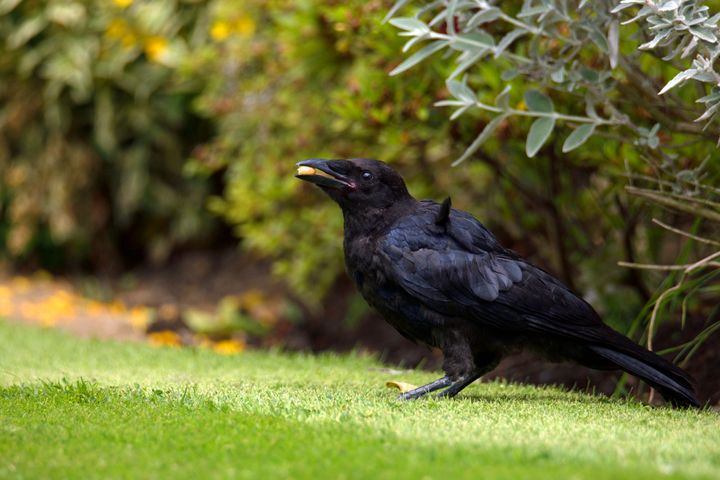
If you’ve got a garden, you’re probably having a fruitful ol’ time at the moment. Everything from cherries to apricots are about to finally ripen ― and even some early apple species will be ready to pick.
But late summer and early autumn bring unique challenges as well as spectacular bounties. Chafer grubs begin to present themselves this month, showing their root-ruining presence through patches of yellowed grass: and now, it seems, there are leatherjackets to worry about too.
Steve Taylor from GreenThumb recently told WalesOnline that the grubs “are a lawn’s worst nightmare and homeowners must be vigilant over the next two months as it’s a prime time for population.”
He adds that “The weather conditions are set to be perfect for the... pests to thrive in and failure to deal with these destructive bugs can lead to the demise of gardens.”
So, we thought we’d share how to spot leatherjackets in your garden (we’ve written about the telltale signs of chafer grubs before), and what to do if you do find them.
Not all leatherjackets are bad
As the Royal Horticultural Society (RHS) says, the term refers to the grub of over 350 types of cranefly. All have their place in the ecosystem, and only some will damage your lawn ― most helpfully eat decomposing matter, some are predatory, and a few like to chow down on your fave flowers.
“Leatherjackets have elongate tubular bodies, up to 30mm long, and are greyish brown. They have no legs or obvious head,” the RHS shared ― not really lookers, are they?
The damage they cause to your lawns tends to be most visible from August to September. Taylor says that the female leatherjackets start to lay their eggs in September, so it’s best to catch them before they do as “Failure to do so will see them grow into adults by February and the damage to the grass can be devastating.“
What do they do that’s so ‘devastating’ to my lawn?
Some leatherjacket grubs eat grass roots, causing the strands to turn an unappealing yellowish brown. They’ll usually start eating your lawn from the inside out, so check the borders of your garden first ― this is where signs of damage will first appear.
The yellow patches “can be distinguished from similar effects caused by lawn diseases or adverse growing conditions by lifting the affected turf and finding leatherjackets in the surface layers of the soil,” the RHS add.
The grubs also attract crows, magpies, rooks, and starlings, which are keen to chow down on the food source. This causes holes in the turf as the birds dig through the soil.
“In flower beds or vegetable plots, seedlings and small plants can be killed when the stems are damaged at soil level,” say the RHS. Oh, good.
So, what can I do about them?
Again, we can’t stress enough that if the leatherjackets aren’t causing your lawn any issues (which most of them don’t), you should leave them well alone. They’re an important part of the ecosystem ― yes, even the damaging type.
However, if you’re noticing that your garden is suffering from the grubs, the RHS recommends biological methods of control. These have multiple benefits; they won’t damage your grass or soil, and they’re way better for the environment than harsher pesticides.
Consider nabbing yourself some pathogenic nematodes, like Steinernema feltiae or S. carpocapsae, via mail order. Once they’ve arrived, ‘water’ them into specific areas of the soil ― they’ll infect the leatherjackets with a bacteria which will eventually cull the population.
“They are not specific to leatherjackets and may also affect other insects in the soil and so should be used in a targeted manner,” the RHS warn, adding that preventative use of nematodes is especially helpful between September and October.
“To be effective, the nematodes require soil that is well drained but moist and with a minimum temperature of 12°C (54°F). The turf around the edge of affected areas should be targeted to deal with larvae spreading out from ‘hot spots’ in the lawn,” the RHS say. And they warn that because damage becomes more visible in the cooler months, you should apply the control at the first sight of harm ― by the time you’ve got a clear-cut case of The Leatherjackets, the soil could be too cold for effective control.
“There are currently no pesticide controls for leatherjackets in lawns or soil which can be applied by home gardeners,” they finish.